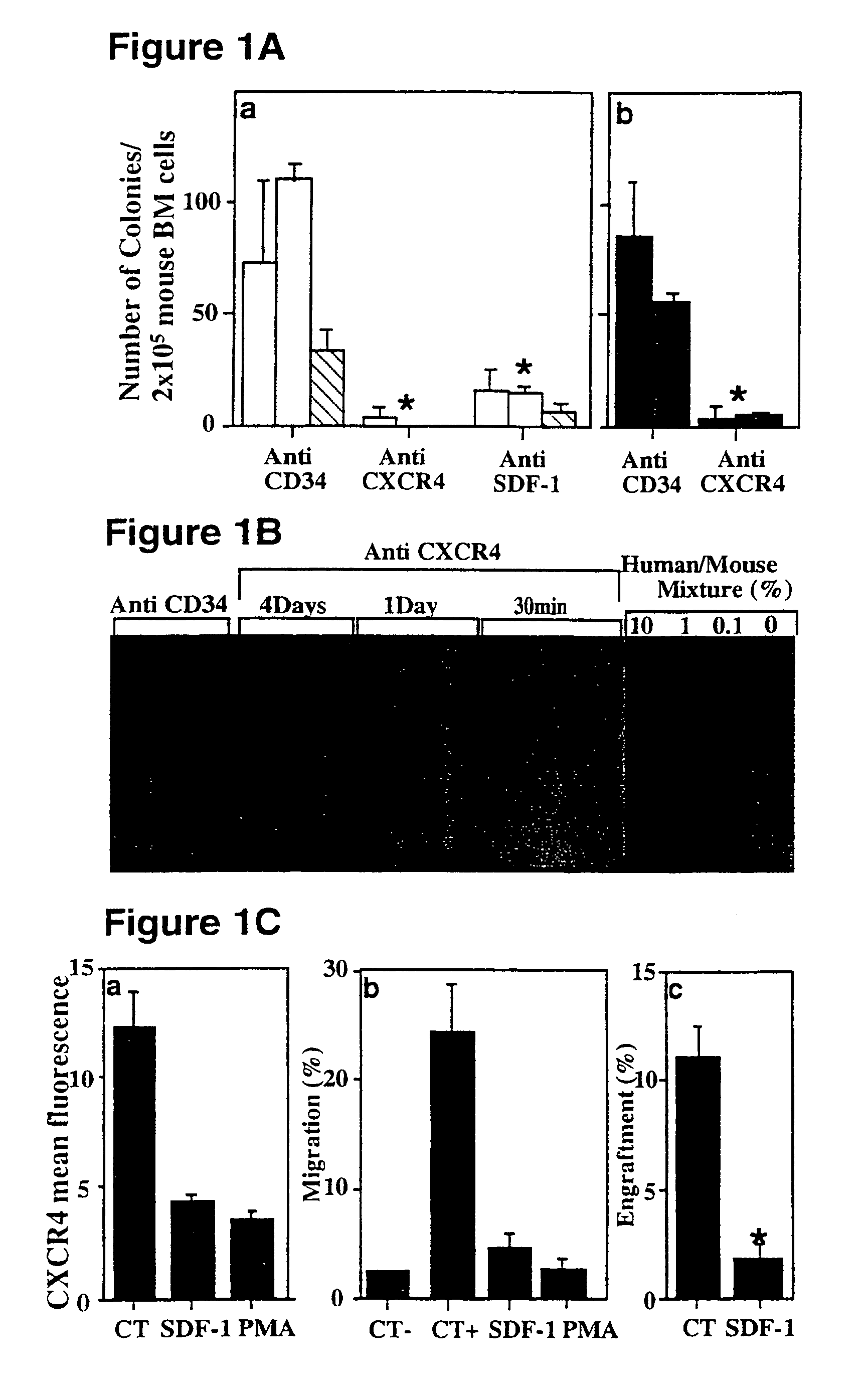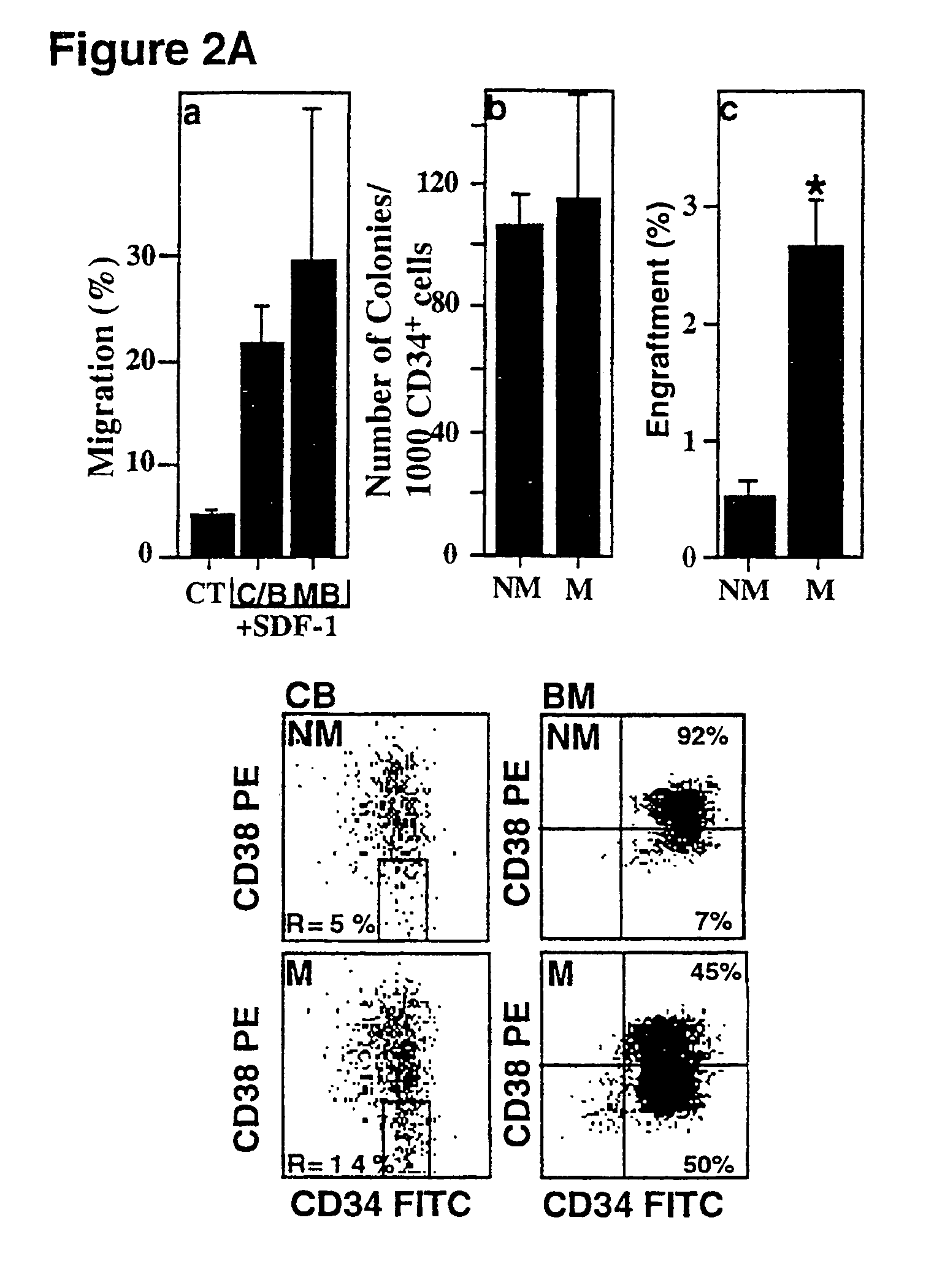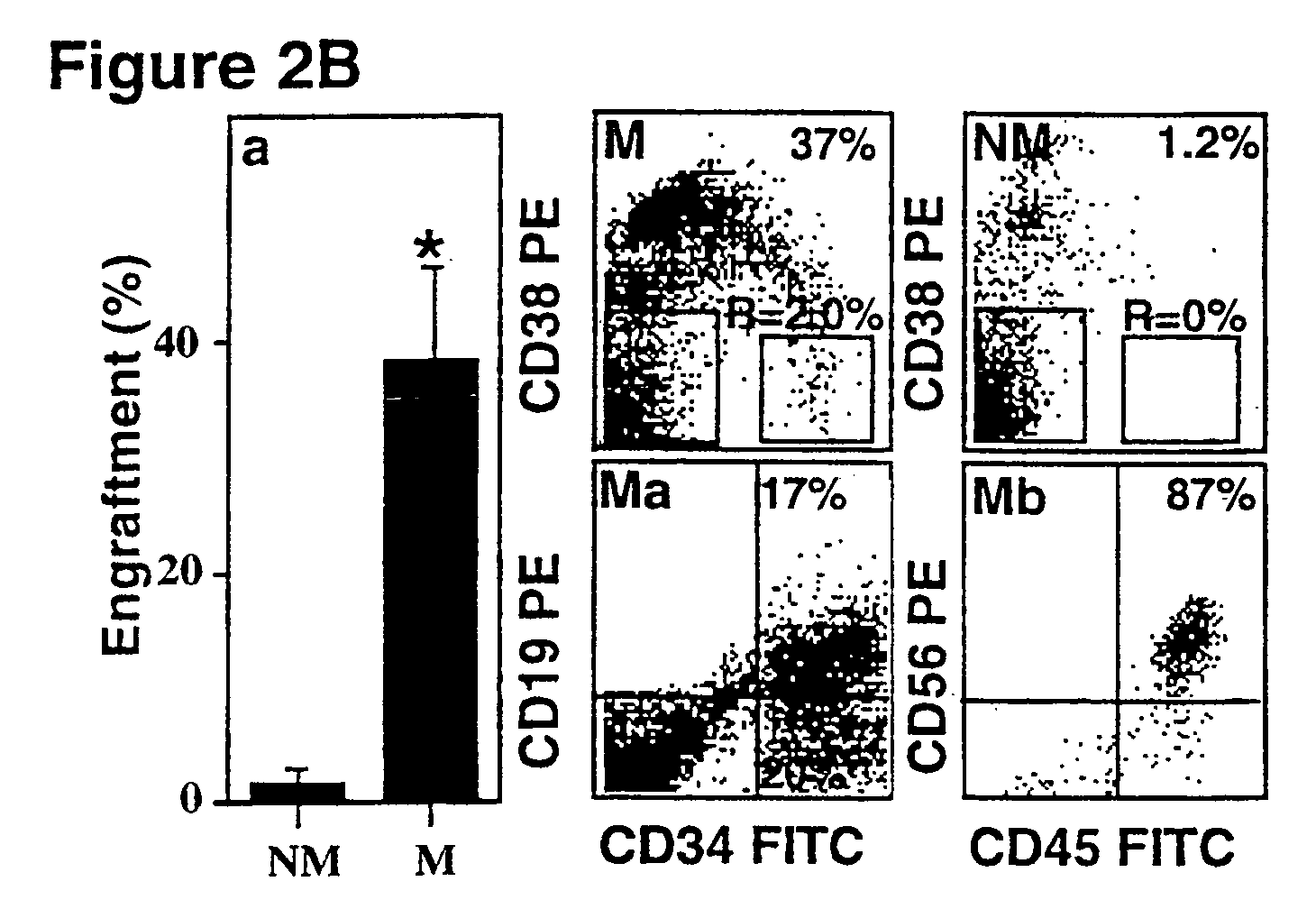Hematopoietic cell composition for use in transplantation
a technology of hematopoietic cells and compositions, applied in the direction of drug compositions, extracellular fluid disorders, skeletal/connective tissue cells, etc., can solve the problems of difficult long-term successful engraftment, high graft rejection rate, and high graft failure rate, so as to prevent engraftment of human stem cells
- Summary
- Abstract
- Description
- Claims
- Application Information
AI Technical Summary
Benefits of technology
Problems solved by technology
Method used
Image
Examples
example 1
Anti SDF-1 and Anti-CXCR4 Antibodies Inhibit Homing of Human CD34+ Cells into the Murine Bone Marrow
[0127]To examine the in vivo role of SDF-1 and its receptor CXCR4 in migration and engraftment / repopulation by human SRCs, CD34+-enriched cord blood cells were treated either with two different monoclonal antibodies to CXCR4 or with control anti-CD34 before transplantation of NOD / SCID mice.
[0128]Human cord blood CD34+ cells were treated for 30 minutes with two alternative mono clonal antibodies to CXCR4 (12g5 or MBA171, 10 μg per 2×105 cells) or with anti-CD34 (IgG1, 10 μg per 2×105 cells) as a control, and the treated cells were transplanted into NOD / SCID mice (2×105 cells / mouse). Alternatively, polyclonal anti-SDF-1 (10 μg per mouse) was coinjected intravenously with the cells (2×105 cells / mouse) and 24 hours later reinjected again intraperitoneally. The mice were sacrificed after two weeks and the levels of human progenitor cells were quantified by human-specific semi-solid colony-...
example 2
SDF-1 Preferentially Induces Migration and Engraftment of CD34+CD38−low CXCR4+ Cells
[0134]The results above lead us to the conclusion that the antibodies to CXCR4, or SDF-1 desensitization and CXCR4 internalization interfered with one or several steps in the engraftment process. We therefore proceeded to analyze the target cells for these antibodies and the mechanism by which the chemokine SDF-1 and its receptor CXCR4 mediate hemopoietic repopulation.
[0135]The migration potential of human CD34+ cells was tested in vitro in a transwell migration assay in response to a gradient of SDF-1. FIG. 2 shows that SDF-1 induces the migration of SCID repopulating cells (SRCs).
[0136]FIG. 2A, panel a, shows migration of CD34+ cells in response to a SDF-1 gradient. The transwell migration assay was performed with human CD34+ cells from cord blood (C), bone marrow (B), or mobilized peripheral blood (MB) cells added to the upper chamber and SDF-1 to the bottom chamber (125 ng / ml). The control experi...
example 3
Potentiation of the In Vitro Migration of MPB and Cord Blood CD34+ Cells Toward a Chemotactic Gradient of SDF-1 and Enhancement of Their Engraftment Potential by SCF alone or Together with IL-6
[0143]Kim and Broxmeyer (1998) have demonstrated that SCF attracts CD34+ cells, increases their motility and synergizes with SDF-1, increasing migration to both cytokines in vitro.
[0144]In order to see whether SCF potentiates CXCR4 expression, cell migration and SRC engraftment, human MPB CD34+ cells were stained with control antibody (curve a) or with anti-CXCR4 monoclonal antibody before (curve b) or after (curve c) 40 hours of treatment with SCF (50 ng / ml), and assayed for surface expression of CXCR4 by immunostaining (FIG. 3A). SDF-1 transwell migration was carried out with untreated (0), SCF-treated (16 and 40 hours), or control cells cultured for 40 hours without SCF (CT). Data are average ±SE of 3 experiments (FIG. 3B). The percent of engraftment in NOD / SCID mice of human transplanted w...
PUM
| Property | Measurement | Unit |
|---|---|---|
| time | aaaaa | aaaaa |
| time | aaaaa | aaaaa |
| pH | aaaaa | aaaaa |
Abstract
Description
Claims
Application Information
 Login to View More
Login to View More - R&D
- Intellectual Property
- Life Sciences
- Materials
- Tech Scout
- Unparalleled Data Quality
- Higher Quality Content
- 60% Fewer Hallucinations
Browse by: Latest US Patents, China's latest patents, Technical Efficacy Thesaurus, Application Domain, Technology Topic, Popular Technical Reports.
© 2025 PatSnap. All rights reserved.Legal|Privacy policy|Modern Slavery Act Transparency Statement|Sitemap|About US| Contact US: help@patsnap.com



